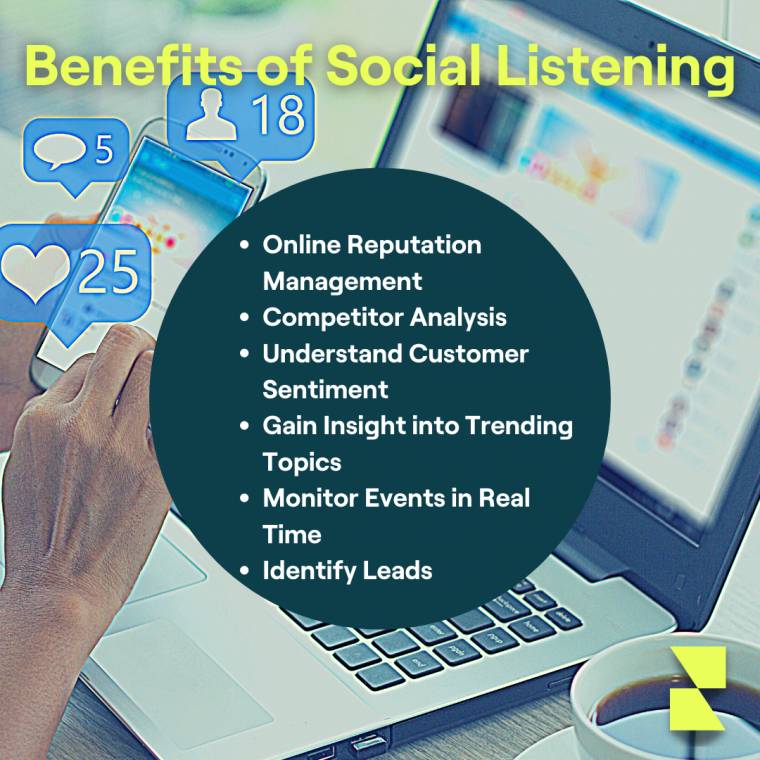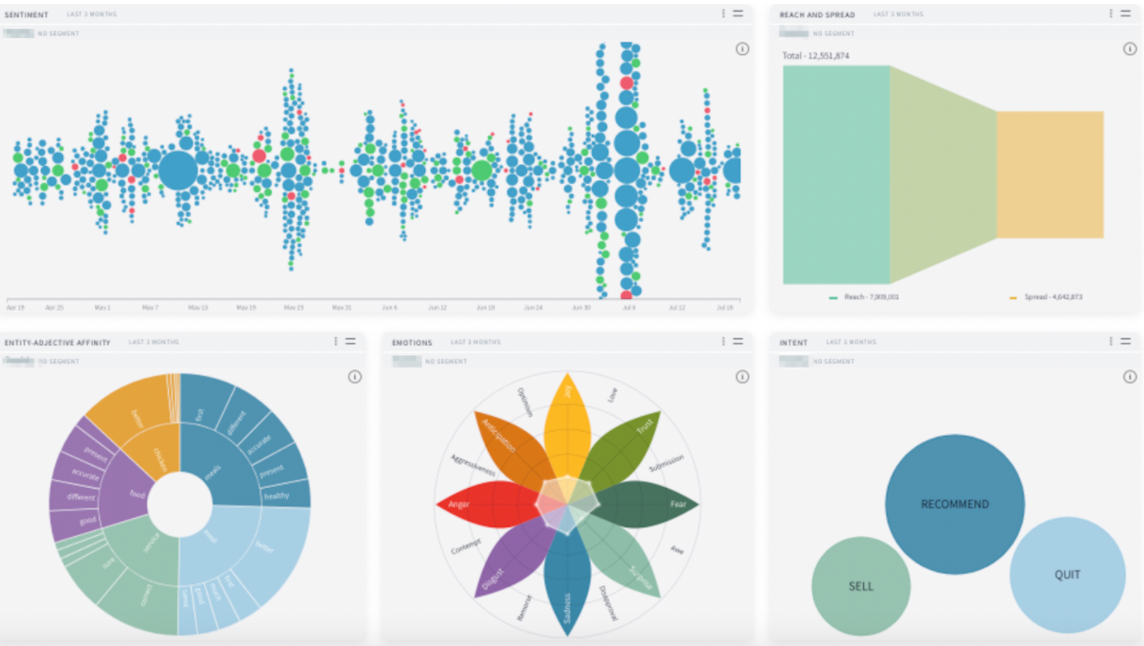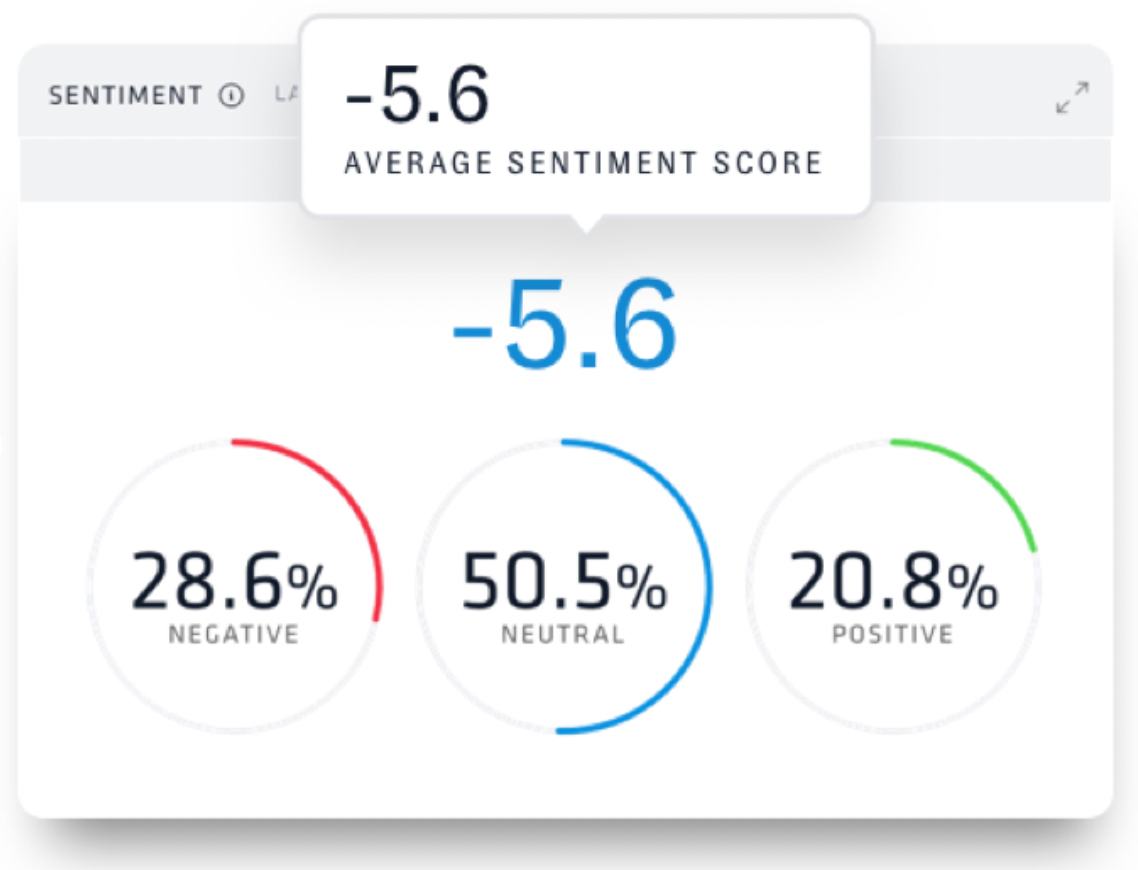How to Create a Social Listening Strategy
Reputation Staff Writer

If you want to connect to your customers on the most granular level possible, your business needs to implement social listening. But you need to develop a thorough understanding and strategy before you can begin. We’ll cover everything you need to know in the following sections:
- Social Listening Definition
- What are the Benefits of Social Listening?
- How to Develop a Social Listening Strategy
- How Reputation Can Help You Get Started With Social Listening
What is the Definition of Social Listening?
Social listening refers to the process of monitoring social media platforms for mentions of your brand online, competitors, and other related keywords. Those online conversations include relevant and actionable data that your business can use to make informed decisions. That data is drawn from your competitors’ and customers’ actions and conversations online. It’s an easy way for your company to stay in control of the narrative while leading your company toward a successful future.
What are the Benefits of Social Listening?

Social listening for business grants you unbiased and raw insight into nearly every aspect of your business in the following ways:
- Online reputation management
- Competitor analysis
- Understand customer sentiment
- Gain insight into trending topics
- Monitor events in real-time
- Identify leads
Online reputation management — Online reputation management has always been Reputation’s bread and butter. As we’ve previously written, social listening takes reputation management to a new level and empowers your brand.
The right social listening tools enable you to learn about a potential crisis and share information before it completely blindsides your team. This means you can watch customer sentiment and take action if it begins to turn sour. You can take what you learned from that particular situation and turn it into a crisis management plan and content marketing strategy.
Related: How to Address the Challenge of Social Media Management at Scale
You can also use those types of social media data to improve your customer experience. Social listening monitoring lets you know what customers are saying about you. If you find any patterns within positive or negative feedback, you can take that data and make necessary changes to your business.
Acting on suggestions that come directly from your customers will prove to them that you value their opinions. That will in turn, transform a hesitant consumer into a return customer.
Competitor analysis — Seeing what your competitors are saying on social media sites should be part of your organization’s social listening management strategy. Social listening can easily enable you to check out their campaigns and see what their customers like or dislike about them. Your business can use that data to its advantage.
For one, you can use their performance to benchmark your own. Competitor analysis is what can take your social media content strategy from good to great. Monitoring the successes and failures of your competition ensures that you aren’t measuring your business’s own performance in a silo.
Analyze the number of times your competitors are mentioned online, the sentiments of their mentions, and audience demographic. That will provide the insights that allow you to optimize your own campaigns to produce even better results.
Understand customer sentiment

Social listening is essential to a more precise and fuller understanding of your customers. You can understand the customer sentiment with social listening, meaning you can see the good, bad, and ugly straight from the source. After implementing social listening, you’ll gain a precise understanding of customer sentiment towards your brand’s behavior online. You can know how customers regard your brand in a crisis but also if your posts, responses, PR, and actions are meeting the issue with an adequate response.
Spot trends — Tracking specific keywords means that you’ll be able to see what topics are trending with your customers. You can note trends in your industry overall as well. If your customers or competition is discussing something happening in your industry, you can leverage that information to create a blog post.
The best social listening tools allow you to filter searches based on metrics like demographics and geography. That means you can get as granular as you need to create campaigns for specific segments of your audience. Constantly monitoring these patterns and trends can help you to create an effective social media strategy for business moving forward.
Monitor events in real-time — Social listening allows you to follow what’s happening in a non-time consuming way, along with the sentiment around it. That might be a product launch or a conference. But more importantly, you can get ahead of a crisis before it happens.
Our recent study showed that IBM experienced the largest negative sentiment spike it has seen in months. Social listening allowed them to pinpoint the origin of the spike to get a jumpstart on crisis management. That made sure they eliminated the problem before it spiraled out of control.
Even if your organization is not as quick to act as IBM, social listening can still help. It will allow you to track untagged conversations about your brand that you might have otherwise missed. These tools will enable you to improve reaction time and deploy service recovery measures. Those may include showing empathy to a disgruntled customer or delivering the necessary post-mortem communication after the crisis has been solved.
Identify leads — Social listening is a great avenue to developing a natural relationship with potential B2B customers. That makes it a great segue into social selling, which is the practice of leveraging social network activity as part of the sales process.
Keep an eye out for a potential lead discussing something within your industry on Twitter, Instagram, Facebook, or any other platform. You can reach out directly with helpful information.
Reaching out on social media establishes your brand as a top resource. That connection will stick with the person when it comes time to make a buying decision. Joining in on social media conversations is a great way to build customer loyalty. This practice will also translate to improved customer service.
Related: Got Multiple Locations? Here’s How to Master Social Media Management
How to Develop a Social Listening Strategy
Effective social listening requires a well-thought-out strategy that will likely touch multiple parts of your organization. Follow these four steps to build a plan that’s right for your business and will help guide you toward success:
- Define your business goals
- Set up your tool
- Choose keywords to track
- Act on the insight you learn
Define your business goals. Social listening can support several business goals. So before you get started, you need to decide which you are working toward.
The specific goal you select will dictate which words or phrases you should be tracking across social media. With that understanding, your team can be more strategic and nimble with the way they listen and how they respond to customers.
Set up your social listening tool. You can’t carry out a social listening strategy without a tool designated for that purpose. Reputation has you covered.
With our acquisition of Nuvi, we now provide deep social listening capabilities with targeted mentions through keyword rules and filters. If you aren’t ready to commit to a paid tool, look around to see which platforms offer a free trial.
Decide which keywords would be beneficial to track. Deciding on the end goal of your social listening strategy will help you to inform the keywords you should be tracking. According to Search Engine Watch, here are five keywords you should be tracking:
- Company name. This allows you to keep tabs on mentions of your brand name. Make sure to track common misspellings and abbreviations for your brand name, along with your URL.
- Competitors. This is how you can see what your competitors are up to and compare your performance against theirs. You can also view the customer sentiment around their brand. You can even jump in and answer questions geared toward them when it’s appropriate.
- Executives. Is the CEO of your company a public-facing figure? If so, it’s wise to track mentions of their name with your social listening tool. That way, you can see if your CEO’s actions on social media might attract attention or if a notable publication mentions them.
- Campaigns. You can utilize social listening to track how your campaigns are being received on social media. Track hashtags and slogans related to your campaign to see what’s working and what’s not.
- Industry Keywords. Track the keywords related to the product or service that you sell. Narrow down to location and language and start the social selling process as quickly as possible.
Related: Social Listening Tools vs. Social Media Monitoring Service: What’s the Difference
Act on the insight you learn from your data. Social listening opens the door to a wealth of knowledge, but it’s up to you and your team to act on it. You should be taking that customer feedback back to your executives regularly. That way, you can make necessary changes and data-driven decisions for your business.
How Reputation Can Help You Get Started With Social Listening

We can help you turn a negative comment into a follow, and a follower into an advocate. The Reputation difference means that we can help you do this on the same platform. That’s right — leverage solutions like our Review Booster, Surveys, and more with our advanced Social Suite.
We use the live data gathered from your social media data to transform the way your brand interacts with customers. Then, you can adapt based on that information. We can analyze those mentions and interactions at scale with human emotion in mind to make sure you understand your target audience. The better you understand them, the quicker you’ll be able to get ahead of problems and identify your successes.
Ready to transform your business and boost customer experience strategies? Get started with our Social Listening Guide.










